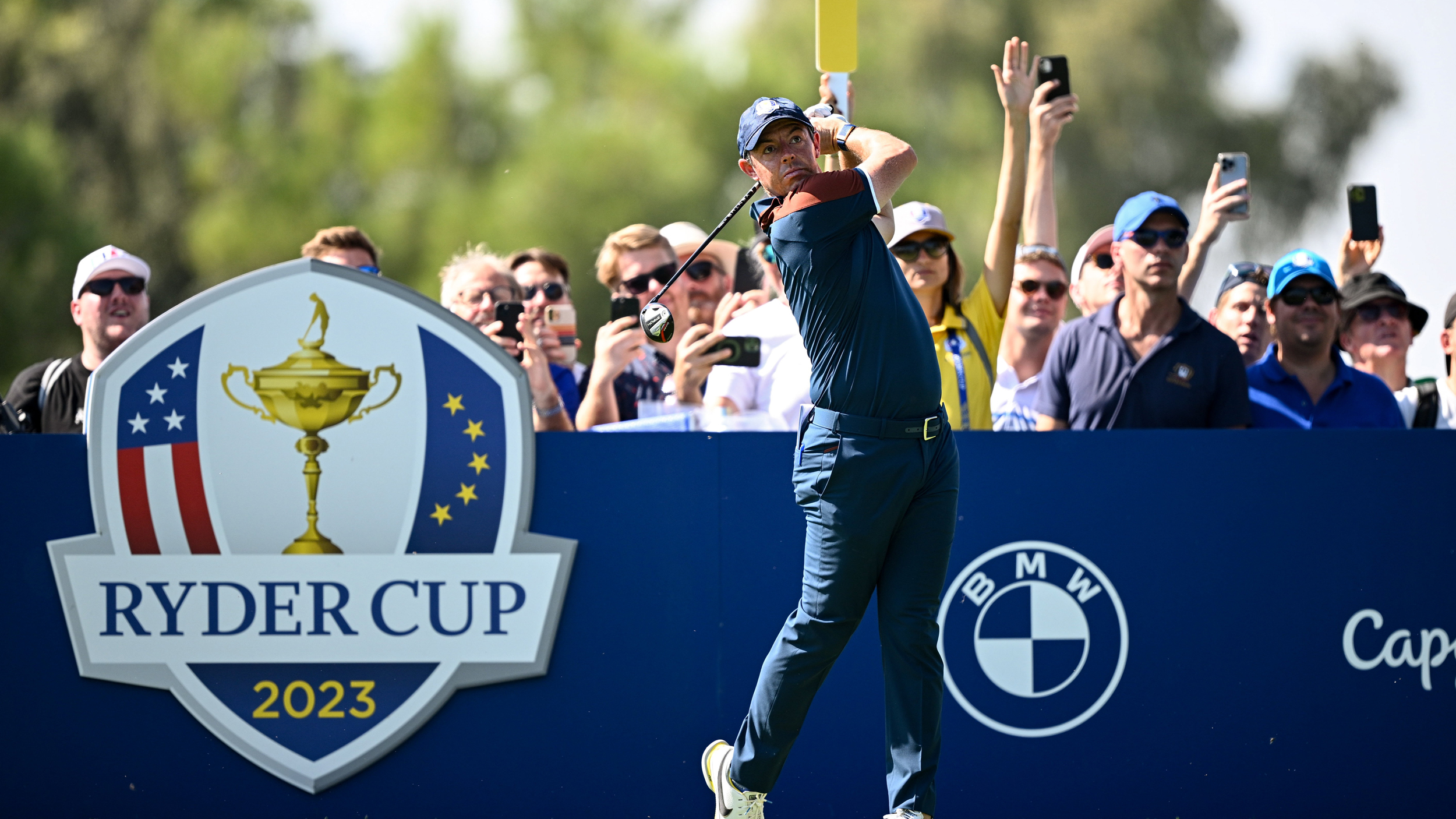Ryder Cup Scoring System And Format Explained
We examine how the Ryder Cup works, including the format, how many points are needed to win and the 2023 order of play


Mike Hall
The 2023 Ryder Cup takes place at Marco Simone for the 44th edition of the biennial match between Team USA and Team Europe.
In total, 28 matches are contested over three days of action with each worth one point.
But what is the format and scoring system? Let's take a look at how the Ryder Cup works, and what each team needs to do to be declared the winner.
Ryder Cup Format Explained - How The Ryder Cup Works
There are a total of five sessions over the three days of play- a set of foursomes and fourball sessions on each of the first two days and a Sunday singles session to conclude.
The Ryder Cup format is head-to-head match play, unlike the usual stroke play format seen on the PGA and DP World Tours.
Each team has 12 players, with eight from both taking part in each foursomes and fourball sessions. Meanwhile, there are four points on offer in each of the sessions of foursomes and fourball.
That means after day one, 8 points will be played for. After two days, 16 points will be contested, with the final 12 points decided on Sunday where all 24 players compete in the 12 singles matches
Subscribe to the Golf Monthly newsletter to stay up to date with all the latest tour news, equipment news, reviews, head-to-heads and buyer’s guides from our team of experienced experts.
The home captain dictates which order the foursomes and fourball sessions are played. This year, Luke Donald opted for foursomes in the morning followed by the fourball session in the afternoon. That schedule holds for both Friday and Saturday.
On Sunday, there are 12 singles matches during which everyone plays an opponent drawn at random. Each captain picks their own 12-man line-up without knowing which order the other team are playing in.

Luke Donald chose foursomes to begin the Ryder Cup at Marco Simone
Foursomes is an alternate shot format, where teams in pairs take turns on each hole using the same ball. So, one player hits the tee shot and the other will play the next shot from where the ball finishes and so on. This continues until the ball is holed. It's a match play competition against the other team, too, so whichever duo takes the fewest shots wins the hole.
Players on each team take turns to tee off, so one will tee it up from the even-numbered holes and the other from the odd-numbered holes.
In fourball, both players from each team play their own ball, so there are four balls in play on every hole. The best score from each team member counts in the match, with the lowest score resulting in a win.
Finally, the 12 Sunday singles matches pit one player against another in head-to-head match play, with the player with the lowest score winning each hole until the match is either won or halved.
How Many Points Are Needed To Win The Ryder Cup?
For either team to win the Ryder Cup outright, they need to reach a total of 14.5 points, the number needed to ensure being mathematically certain of victory.
However, as we witnessed at the women's equivalent of the contest, the 2023 Solheim Cup, sometimes scoring ends in a tie at 14-14 - leading to the holders retain the trophy.
That led to suggestions there should be a playoff to determine an outright winner of such contests, but instead, the defending champions keep the cup.
That means, for Team Europe, only an outright win will do this year, because it lost to Team USA 19-9 in the 2021 edition at Whistling Straits.
Ryder Cup Order Of Play
Times in local CET
- Friday 29 September:
7.35am-8.20am Foursomes matches 12.25pm-1.10pm Fourball matches - Saturday 30 September:
7.35am-8.20am Foursomes matches 12.25pm-1.10pm Fourball matches - Sunday 1 October:
11.35am Sunday Singles (12 players tee off every 12 minutes)

Joel has worked in the golf industry for over 15 years covering both instruction and more recently equipment. He now oversees all equipment and video content at Golf Monthly, managing a team of talented and passionate writers and presenters in delivering the most thorough and accurate reviews, buying advice, comparisons and deals to help the reader or viewer find exactly what they are looking for.
One of his career highlights came when covering the 2012 Masters he got to play the sacred Augusta National course on the Monday after the tournament concluded, shooting a respectable 86 with just one par and four birdies. To date, his best ever round of golf is a 5-under 67 back in 2011. He currently plays his golf at Burghley Park Golf Club in Stamford, Lincs, with a handicap index of 3.1.
Joel's current What's In The Bag?
Driver: Titleist GT3, 9°, Fujikura Ventus Black 6 S shaft.
Fairway wood: Titleist TSR3, 15°
Hybrid: Titleist TSi2, 18°
Irons: Titleist T150, 4-PW
Wedges: Titleist Vokey SM10, 50°, 54° and 58°
Putter: LAB Golf DF3
Ball: 2025 Titleist Pro V1x
- Mike HallNews Writer